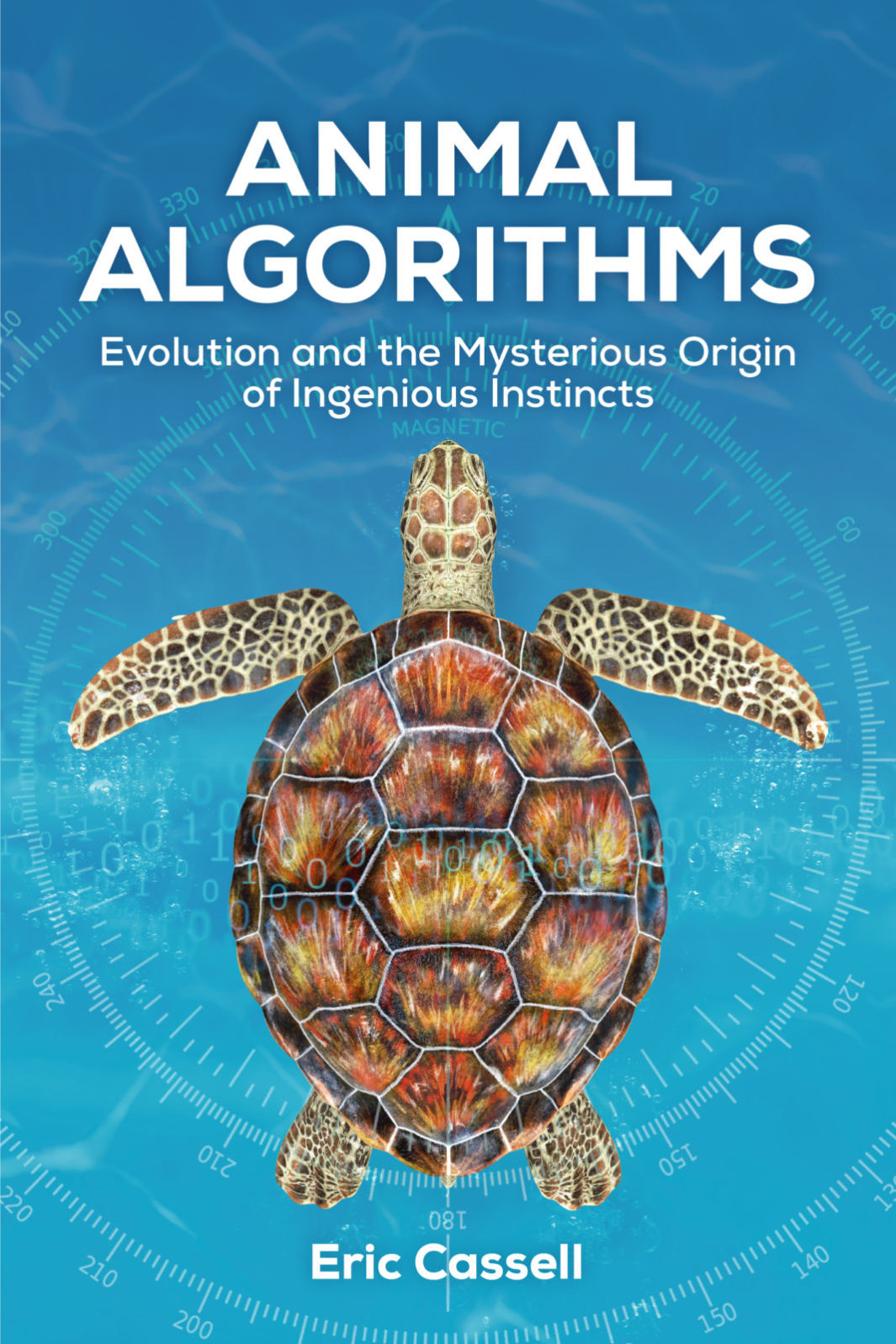The Intelligence Birds and Bees Naturally Have — and We Don’t
An exploration of the stunning findings in Eric Cassell's new book, "Animal Algorithms"You’re aiming to find your childhood friend’s home in a new city. A map helps; GPS is better. Accessing all that previously-acquired mapmakers’ knowledge, employing all of that satellite, radio and computing technology, you’ll probably (although not certainly) reach your goal. Could some “dumb bird” do any better?
Way better, actually.
Baked-in Brain Power
A bird born near Wales (UK) knows how to fly over 6,200 miles (10,000 km) south in the winter, following the west coastlines of Europe and Africa, then crossing the Atlantic Ocean to land in Argentina. The same bird knows how to return to its original home a few months later. She flies north along the east coasts of South and North America, then crosses the Atlantic back to her birth location. No education or training, no YouTube teaching video, not even a mentor shows the bird, a Manx shearwater, how to accomplish this navigational feat. How does she know the way and what tools does she use?

The Manx shearwater’s extraordinary story of innate intelligence is just one that Eric Cassell, an engineer of aircraft navigation systems, explores in his book, Animal Algorithms (2021). The book concentrates upon the questions arising from observing behaviors that could only be wired-in or pre-programmed, so it focuses upon animals not usually regarded as “intelligent.” It describes features and behaviors seen in ants, termites, sea turtles, migrating birds and homing pigeons, wasps, fruit flies, terns, lobsters, and even dung beetles.
Typically, we think of these animals as instinctually skillful but not smart. They aren’t even mammals with large brains; the ant’s brain is about 1/4 the size of a pin head, for example, and bird brains range from less than a gram to 20 grams of mass. These animals exhibit behaviors but lack minds, we say.

Complex Programmed Biological and AI Behaviors
But what are behaviors if not the products of animals’ minds? Author Cassell applies his engineering education and career experience to show that such animal behaviors must be algorithms running on specialized hardware. Simply stated, using evolutionary biologist Ernst Mayer’s definition quoted in Animal Instincts, a biological algorithm is a:
coded or prearranged information that controls a process (or behavior) leading it toward a given end.
Eric Cassell, Animal Algorithms, p. 29
Indeed, artificial intelligence systems (AI) are the same: algorithms running on specialized hardware. AI systems and Complex Programmed Behaviors (CPBs) are conceptually similar as they both involve functions and capabilities in perception, communication, information processing, learning, and decision-making. Cassell observes that both AI and CPB systems require:
a lot of interdependencies, and therefore the design requirements must take this into account to ensure the components and operation function coherently. If all of the functions are not integrated correctly, system performance is significantly degraded.
Eric Cassell, Animal Algorithms, p. 86
The animal algorithms detailed in Cassell’s book include those for migration, navigation, nest building, foraging, social cooperation, and more. How do these algorithms originate?

No Undesigned Self-Piloted Flying Machines
Zeroing in on the example of short-range and long-haul navigation, Cassell declares from professional experience that navigation systems do not arise from pieces of hardware and software that get piled together. Cassell takes the algorithm engineering approach to highlight purpose, plan, engineering techniques, and foresight, all necessary to design and implement the behaviors. Thus, navigation systems must be designed, top down and structured:
Step One: “Define the overall goal, including the purpose of the system.”
Step Two: “Develop a concept for implementing the system including the primary functions.”
Step Three: Analyze the “potential design options…assessing the options and evaluating the trade-offs, which for man-made systems include performance, complexity, and cost.”
Step Four: “Define the specific requirements” of the system.
Step Five: Manufacture the system.
Eric Cassell, Animal Algorithms, p. 86
For navigation systems to guide successfully the animal or human traveler, they must include: (1) pre-loaded data; (2) preprogrammed software; and (3) guidance correction and decision-making during the trip, adapting to varying circumstances. Navigation system software cannot arise by means other than an intelligence that possesses the data, writes the software, and supplies the hardware to run the software and direct the traveler’s next moves in real time.
We say honey bees and ants are not very intelligent, yet their navigation expertise is entirely non-trivial. Likewise are the many insects’ nest construction powers. Cassell observes it would take deep thought and sophisticated design techniques to build a robot to accomplish what the bees, ants and termites can do shortly after birth:
If human engineers and software programmers were called on to replicate [such] ability in robots controlled by artificial intelligence, they would find themselves forced to extend well beyond basic programming techniques in order to deliver the goods. The same is true of the complex programmed behaviors that appear to underlie sophisticated nest construction among bees, termites, and other architecturally proficient insects.
Eric Cassell, Animal Algorithms, p. 153
From the engineering mindset, Cassell explains algorithms must be designed because their sources – information – cannot arise by undirected processes:
Blind processes have never been observed to produce truly novel complex and specified information, nor has any such process been properly modeled doing so in a computer environment.
Eric Cassell, Animal Algorithms, p. 202
Do animals exhibiting CPBs have themselves “minds” in some sense? That question is unanswered. We do know from logic and experience, however, that goal-directed action supported by hardware and software systems must originate from the design efforts of intelligent agents, that is, from conscious minds. Jonathan Bartlett’s June 15, 2021, article here concisely summarized this conclusion:
Intelligent Design … says that agency is a distinct causal category in the world. That is, when I code a computer program, write a book, invent a formula, write a poem, etc., I am doing something that is distinctively beyond the operation of pure physics. There is something distinct about the way that causation works for beings with minds compared to how it works for beings without minds.
Jonathan Bartlett, “Intelligent Design Is Not What Most People Think It Is” at Mind Matters News
Somebody somewhere knew how to build complex nests and navigate thousands of miles using sophisticated biological hardware – and programmed the bees and the birds accordingly. Discovering the who and how in that equation may well blow our minds.
